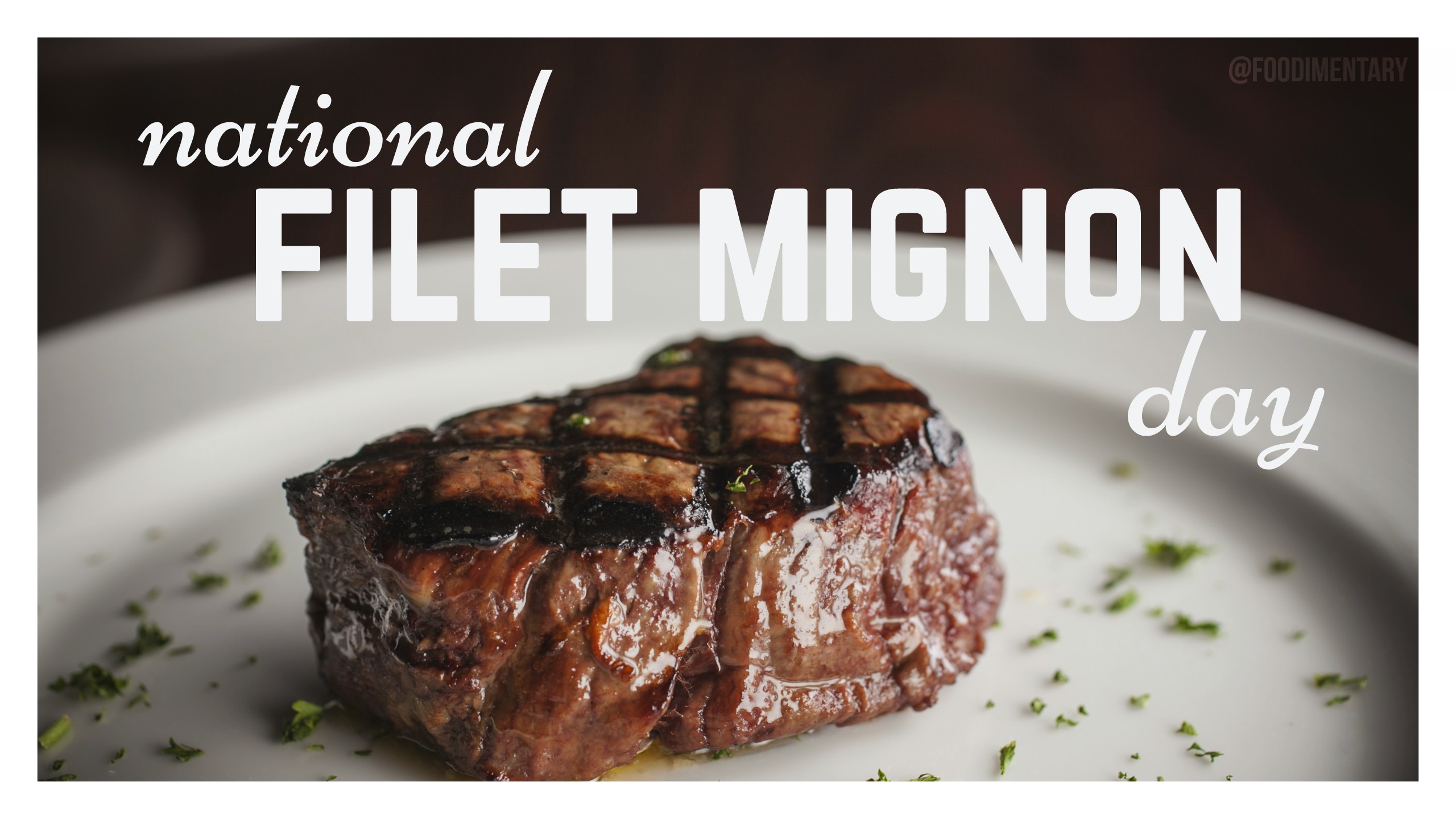National Filet Mignon Day on August 13th celebrates the tender, delicate, and flavorful cut of beef known as filet mignon. Steak aficionados look forward to this annual holiday as a chance to savor the exquisite taste and texture of filet mignon.
History of Filet Mignon
Filet mignon originates from France, where it was first prepared as a dish for French nobility. The name “filet mignon” comes from French words meaning “dainty fillet.”
Filet mignon was popularized in French cuisine starting in the 17th and 18th centuries. It comes from the small end of the tenderloin, which is one of the most tender cuts of beef. The tenderloin runs along the spine of the cow, meaning filet mignon does very little work and stays tender.
In the early 1900s, filet mignon grew in popularity in the United States as fine dining restaurants started putting it on menus. It became seen as a luxurious and elegant steak option. Over time, filet mignon has remained a specialty cut at steakhouses and in home kitchens.
How to Celebrate National Filet Mignon Day
There are many delicious ways to celebrate National Filet Mignon Day on August 13th:
- Grill your own filet mignon – Season a filet mignon with salt, pepper and your favorite herbs. Grill to your desired doneness for a restaurant-quality steak.
- Visit a steakhouse – Many steakhouses will offer filet mignon specials on National Filet Mignon Day. Enjoy filet mignon at your favorite upscale restaurant.
- Make Beef Wellington – For an elegant presentation, wrap filet mignon in puff pastry to create a Beef Wellington.
- Pair with delicious sides – Serve filet mignon with sides like creamed spinach, potatoes au gratin, roasted asparagus or sautéed mushrooms.
- Make surf and turf – For an indulgent meal, pair filet mignon with lobster tail or jumbo shrimp.
- Start with steak tartare – Begin your filet mignon meal with a classic steak tartare appetizer.
No matter how you choose to celebrate, National Filet Mignon Day is the perfect opportunity to savor the rich, buttery flavor of a perfectly cooked filet mignon.
Timeline of Filet Mignon History
- 17th-18th century – Filet mignon grows popular in French nobility cuisine.
- Early 1900s – Filet mignon appears on menus at fine dining restaurants in the U.S.
- 1920s – Filet mignon is served as an upscale steak option in homes and restaurants.
- 1960s – Rise of steakhouse chains leads to filet mignon being widely available.
- Present – Filet mignon remains prized cut of beef, especially for special occasions.
Frequently Asked Questions
What is filet mignon?
Filet mignon is a cut of beef taken from the small end of the tenderloin, the most tender part of the cow. It is known for its delicate texture and buttery, flavorful taste.
Why is filet mignon so expensive?
Filet mignon is expensive because the tenderloin, where it comes from, is a very small muscle that does little work. Less supply and high demand for this tender cut drives the price up.
How should you cook filet mignon?
Filet mignon should be cooked quickly over high heat. Pan searing, grilling, and broiling are great cooking methods. Take care not to overcook filet mignon to keep it tender.
What is the best way to season filet mignon?
Simple salt and pepper seasoning enhances the flavor of filet mignon without overpowering it. Herbs like thyme, rosemary, and garlic can also complement the flavor.
What sides go well with filet mignon?
Rich side dishes like creamed spinach, potatoes au gratin, or sautéed mushrooms pair nicely with filet mignon. A red wine reduction sauce is also a classic accompaniment.
Can you cook filet mignon in the oven?
Yes, filet mignon can be cooked in the oven. Use a meat thermometer to ensure it reaches your desired doneness. Let it rest before slicing into it.
Is filet mignon healthy?
Filet mignon is lean and contains nutrients like iron, zinc, and B vitamins. However, it is high in saturated fat and cholesterol, so enjoy in moderation as part of a balanced diet.
What is the difference between filet mignon and tenderloin?
Filet mignon comes from the small tapered end of the tenderloin. The main part of the full tenderloin is also extremely tender and can be prepared as a roast or steaks.
Can I freeze and save leftover filet mignon?
Yes, you can freeze leftover filet mignon safely for later use. Let it thaw in the refrigerator before cooking again. The texture may become slightly less tender.

